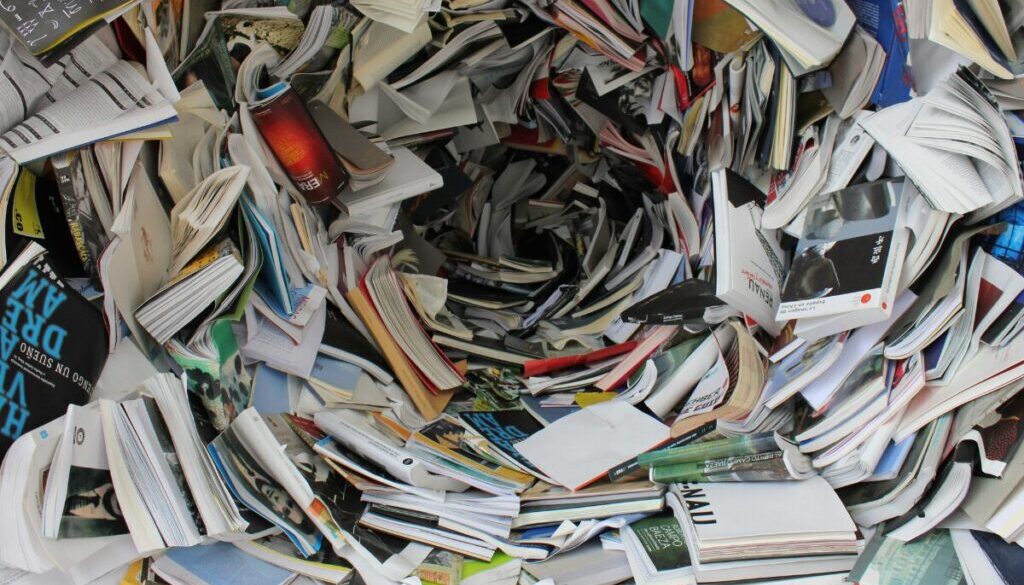Paper and Prejudice

This paper informs consumers about products they may currently be buying. Hopefully this article will increase consumer demand. As a result, industries should supply safer and more sustainable products.
Until the 1850s, paper was a rare and costly product. Consequently, manufacturers designed these products to be durable. Subsequent research revealed the cost-effectiveness of producing paper from trees. Consequently, the world adapted to paper’s versatility, which led to innovations. A few creations resulted in single-use products. Currently, these products account for nearly half of all paper produced. Most of these products are quickly sent to landfills (Wikipedia History). Not surprisingly, there has been a growing concern about traditional paper. Specifically the environmental harm that it causes.
🏛Problems With Traditional Paper💰
Traditional wood contains 23-40% lignin. Removing this lignin makes the pulping process energy-intensive (Gavrilescu et al). Additionally, technology used to create paper produces air pollutants. These pollutants include the following. VOCs, nitrous oxides, sulfur oxides, acetone, and methanol (James Owens). Consequently, technologies have been developed to reduce these emissions. However, many governments still subsidize the traditional way of making paper. Which makes it difficult for environmentally friendly manufacturers to compete. Consequently, the above-mentioned toxins are being released at an alarming rate. Furthermore, bleaching enhances the whiteness of these types of papers. Although some manufacturers sometimes opt for oxygen as a chlorine substitute (Gavrilescu).
🧻 Cost of High-Grade Toilet Paper🌲
For lower-grade products 100% recycled paper is a viable option. These products include napkins and packaging. Additionally bleaching is unnecessary for these products. Producing goods from recycled materials requires less energy. Consequently it preserves forests in the process. Only a small percentage of high-grade office papers contain 100% recycled material. However the rest of it is still made from forests. Additionally, most high-quality toilet papers come from Canadian virgin forests (Abramovitz and Matton) .
Recycling is not the sole solution to this problem. Lignin removal is the most energy-intensive part of making paper. Accordingly, it would seem logical to use a plant that has less lignin. Non-wood products contain less lignin. Farmers burn their non-wood by-products. Instead, they might be usable as paper feedstocks. Burning adds to unnecessary air pollution. Repurposing these by-products could yield paper. For instance, corn and sugar cane contain 9-15% lignin ( Perzon et al). Resulting in more environmentally friendly paper. Using these materials could add to the farmers’ bottom line. Currently, some high-grade sugar cane multi-use paper is available. It is sold in both office supply and grocery stores.
🤑Advantages of Using Hemp Paper 📄
One non-wood plant contains 3% lignin. Plus it does not require herbicides or bleaching. For more information about alternatives to herbicides read War of the Weeds. That plant is hemp. Hemp has the potential to produce cheap high quality paper. It can be used on the office or as toilet paper (Hayo van Der Wef). Currently, only a few stores sell these products. This is most likely because hemp has a fiscal competitive disadvantage. So it ends up costing more than the environmentally unfriendly alternative.
Here are some factors that make hemp products cost more. One, hemp farmers receive fewer subsidies than the timber industry. Two, it requires more manual effort than harvesting trees. Three, there are a number of hemp fungal infections. These disease could damage the plants ( Finman and Styles). Consumer demand is key to overcoming these obstacles. Manufacturers need figure out solutions to these problems. Once they do it will add to their bottom line. Which would attract more consumers. Hopefully, state and local governments will sense the shifting sentiments of the voters. Since they hold the purse strings for research and development of hemp products.
📝Buying Eco-Friendly Paper Protects The Planet🌏
For over a century, paper has been a cheap widely used product. It is especially prevelant in Western and some Eastern cultures. The environmental toll is enormous. It includes poisoned water and air, and as much as 40% of the waste in landfills. Using toilet paper made from virgin wood pulp contributes to deforestation and habitat loss. Ecosystems like the Canadian Boreal forest are destroyed in the process. There is a more sustainable approach to paper production. As a society, we can buy office paper created from agricultural byproducts. For example sugar or corn. These practices would spare the world’s forests. Hopefully, this change in consumer habit will change political will. Then the federal government will refrain from subsidizing the traditional paper industry. Alternatively supporting research and development of non-wood products.




March 12, 2025 @ 7:12 pm
Thank you for this outstanding article and cited research! And thank you to Let’s Talk Hemp for distributing the link in its recent newsletter so I could discover both the article and your fuller body of purpose-driven work. May hemp paper become the norm in short order!